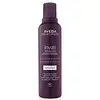What's inside
What's inside
 Key Ingredients
Key Ingredients

 Benefits
Benefits

 Concerns
Concerns

 Ingredients Side-by-side
Ingredients Side-by-side

Water
Skin ConditioningSodium Lauroyl Methyl Isethionate
CleansingSodium Chloride
MaskingMethyl Soyate
EmollientBabassuamidopropyl Betaine
CleansingSodium Methyl Cocoyl Taurate
CleansingCocamide Mipa
EmulsifyingGlycol Distearate
EmollientPropanediol
SolventCurcuma Longa Root Extract
MaskingPanax Ginseng Root Extract
EmollientEmblica Officinalis Fruit Extract
Skin ConditioningLauric Acid
CleansingGlyceryl Caprylate
EmollientLactic Acid
BufferingSodium Laurate
CleansingMethyl Trimethicone
Skin ConditioningArginine
MaskingSalicylic Acid
MaskingAcetyl Carnitine Hcl
Skin ConditioningSodium Gluconate
Skin ConditioningAcrylates/Dimethicone Copolymer
Skin ConditioningGuar Hydroxypropyltrimonium Chloride
Skin ConditioningMalt Extract
Skin ProtectingAdenosine Phosphate
Skin ConditioningCreatine
Skin ConditioningYeast Extract
Skin ConditioningCaffeine
Skin ConditioningDimethicone PEG-8 Polyacrylate
Polyglyceryl-10 Laurate
Skin ConditioningParfum
MaskingLinalool
PerfumingEugenol
PerfumingGeraniol
PerfumingCitronellol
PerfumingCitral
PerfumingBenzyl Benzoate
AntimicrobialLimonene
PerfumingPotassium Sorbate
PreservativePhenoxyethanol
PreservativeWater, Sodium Lauroyl Methyl Isethionate, Sodium Chloride, Methyl Soyate, Babassuamidopropyl Betaine, Sodium Methyl Cocoyl Taurate, Cocamide Mipa, Glycol Distearate, Propanediol, Curcuma Longa Root Extract, Panax Ginseng Root Extract, Emblica Officinalis Fruit Extract, Lauric Acid, Glyceryl Caprylate, Lactic Acid, Sodium Laurate, Methyl Trimethicone, Arginine, Salicylic Acid, Acetyl Carnitine Hcl, Sodium Gluconate, Acrylates/Dimethicone Copolymer, Guar Hydroxypropyltrimonium Chloride, Malt Extract, Adenosine Phosphate, Creatine, Yeast Extract, Caffeine, Dimethicone PEG-8 Polyacrylate, Polyglyceryl-10 Laurate, Parfum, Linalool, Eugenol, Geraniol, Citronellol, Citral, Benzyl Benzoate, Limonene, Potassium Sorbate, Phenoxyethanol
Ingredients Explained
These ingredients are found in both products.
Ingredients higher up in an ingredient list are typically present in a larger amount.
Citronellol is used to add fragrance/parfum to a product. It is often derived from plants such as roses. In fact, it can be found in many essential oils including geranium, lavender, neroli, and more. The scent of Citronellol is often described as "fresh, grassy, and citrus-like".
Since the Citronellol molecule is already unstable, Citronellol becomes irritating on the skin when exposed to air.
Citronellol is a modified terpene. Terpenes are unsaturated hydrocarbons found in plants. They make up the primary part of essential oils.
Citronellol is not able to be absorbed into deeper layers of the skin. It has low permeability,
Citronellol is also a natural insect repellent.
Learn more about CitronellolGeraniol is used to add fragrance/parfum to a product. It is the main component of citronellol. It is a monoterpenoid and an alcohol.
Monoterpenes are naturally found in many parts of different plants.
Geraniol can be found in many essential oils including Rose Oil and Citronella Oil. The scent of Geraniol is often described as "rose-like". Many foods also contain Geraniol for fruit flavoring.
Geraniol can irritate the skin when exposed to air. However, irritation depends on the ability of geraniol to penetrate into the skin. In general, geraniol is not able to penetrate skin easily.
Geraniol is colorless and has low water-solubility. However, it is soluble in common organic solvents.
Like citronellol, it is a natural insect repellent.
2,6-Octadien-1-ol, 3,7-dimethyl-, (2E)-
Learn more about GeraniolLimonene is a fragrance that adds scent and taste to a formulation.
It's found in the peel oil of citrus fruits and other plants such as lavender and eucalyptus. The scent of limonene is generally described as "sweet citrus".
Limonene acts as an antioxidant, meaning it helps neutralize free radicals.
When exposed to air, oxidized limonene may sensitize the skin. Because of this, limonene is often avoided by people with sensitive skin.
The term 'fragrance' is not regulated in many countries. In many cases, it is up to the brand to define this term. For instance, many brands choose to label themselves as "fragrance-free" because they are not using synthetic fragrances. However, their products may still contain ingredients such as essential oils that are considered a fragrance.
Learn more about LimoneneLinalool is a fragrance and helps add scent to products. It's derived from common plants such as cinnamon, mint, citrus, and lavender.
Like Limonene, this ingredient oxidizes when exposed to air. Oxidized linalool can cause allergies and skin sensitivity.
This ingredient has a scent that is floral, spicy tropical, and citrus-like.
Learn more about LinaloolParfum is a catch-all term for an ingredient or more that is used to give a scent to products.
Also called "fragrance", this ingredient can be a blend of hundreds of chemicals or plant oils. This means every product with "fragrance" or "parfum" in the ingredients list is a different mixture.
For instance, Habanolide is a proprietary trade name for a specific aroma chemical. When used as a fragrance ingredient in cosmetics, most aroma chemicals fall under the broad labeling category of “FRAGRANCE” or “PARFUM” according to EU and US regulations.
The term 'parfum' or 'fragrance' is not regulated in many countries. In many cases, it is up to the brand to define this term.
For instance, many brands choose to label themselves as "fragrance-free" because they are not using synthetic fragrances. However, their products may still contain ingredients such as essential oils that are considered a fragrance by INCI standards.
One example is Calendula flower extract. Calendula is an essential oil that still imparts a scent or 'fragrance'.
Depending on the blend, the ingredients in the mixture can cause allergies and sensitivities on the skin. Some ingredients that are known EU allergens include linalool and citronellol.
Parfum can also be used to mask or cover an unpleasant scent.
The bottom line is: not all fragrances/parfum/ingredients are created equally. If you are worried about fragrances, we recommend taking a closer look at an ingredient. And of course, we always recommend speaking with a professional.
Learn more about ParfumWater. It's the most common cosmetic ingredient of all. You'll usually see it at the top of ingredient lists, meaning that it makes up the largest part of the product.
So why is it so popular? Water most often acts as a solvent - this means that it helps dissolve other ingredients into the formulation.
You'll also recognize water as that liquid we all need to stay alive. If you see this, drink a glass of water. Stay hydrated!
Learn more about Water